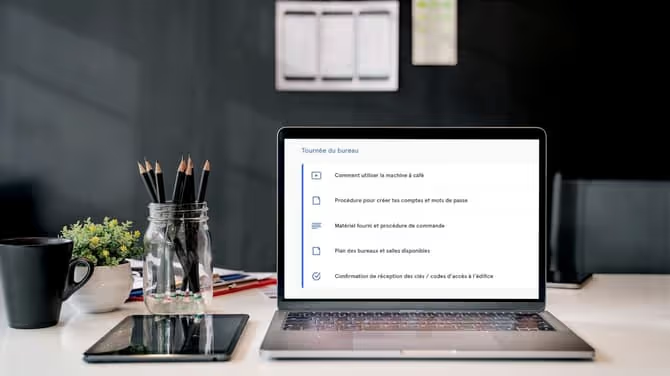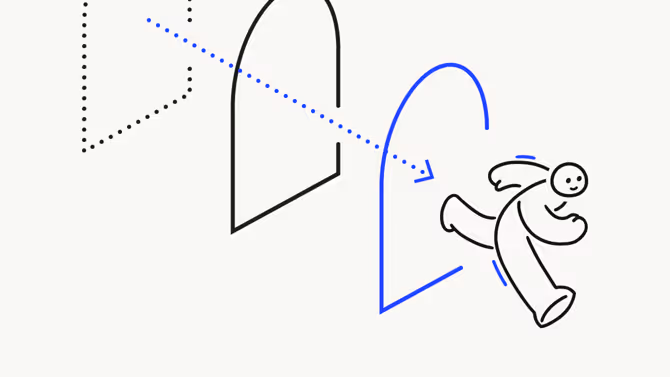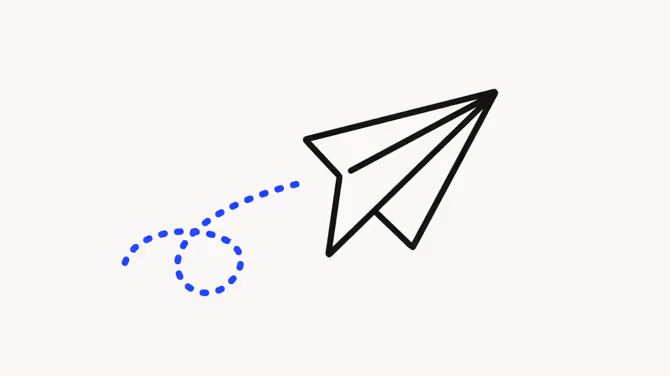The Gen Z welcome: How the Connected Generation wants to onboard to a new job
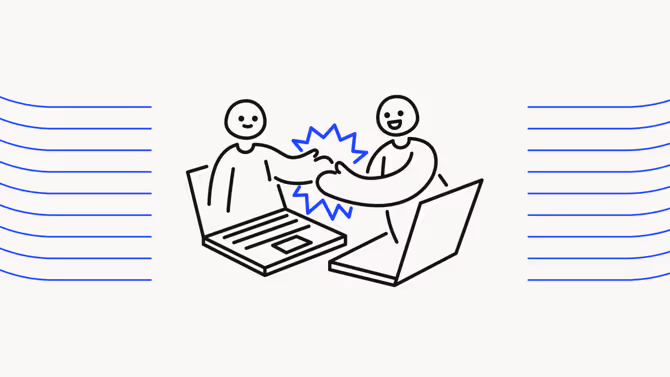
Streamline, organize, and automate your onboarding process like magic.
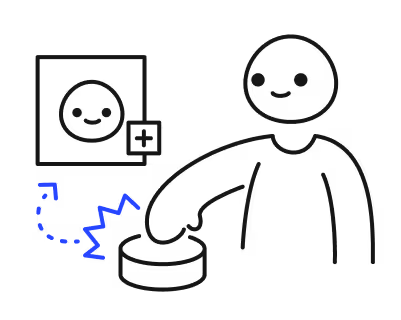
Are you geared up to embrace the new wave of talent? Gen Z has entered the (workforce) chat and is bringing a new set of expectations and values that are reshaping the traditional onboarding process.
Ambitious, autonomous, and adaptable, the new generation of workers has a fresh outlook on what it means to be a good employee—and what it takes to stick with a great employer.
Companies, it's time to buckle up for this shift (if you haven't already) because the future of your business depends on Gen Z. And guess what? It all starts with how you onboard them.
Let's explore how you can adapt your onboarding to resonate with the Connected Generation.
Gen Z at work: A digital-first, knowledge-hungry generation
Gen Z is taking the workforce by storm and is set to make up a larger portion of workers than boomers within the next year. Employees from the Connected Generation have a fresh perspective on work; their approach is digital-first, hungry for knowledge, and authentic to who they are.
What does this mean for how you run your business? You’ll want to consider these differences in your onboarding experience because how employees start out at your company sets the tone for their entire tenure. Gen Z isn’t afraid to make a move when the vibes aren’t right, so a proactive engagement and retention strategy is clutch.
Let’s break down what makes Gen Z stand out from other generations and how that translates to their expectations when starting a new job.
Digitally adept, expecting seamless experiences
Having grown up in the digital age, Gen Z workers have an inherent comfort and fluency with technology. They’re adept at virtual collaboration and leveraging digital tools in their work. As AI continues to grow its presence in workplaces, it also presents a promising opportunity. Gen Z workers are perfectly primed to experiment, run tests, and develop best practices for how these tools can contribute to your business success.
So what’s the catch? Gen Z is tech-savvy by nature and quick to adapt to new tools and software—but they’re also partial to apps that provide a flawless user experience and quick to forgo a new tool if it doesn’t deliver. You might not have to train them on your tech stack, but if you’re working with old-school systems, it could lead to frustration.
{emphasize}How to incorporate this in your onboarding:
- Implement friendly digital forms in place of tedious paperwork, and strive for a straightforward IT setup with minimal manual intervention.
- Consolidate and simplify your tech stack with tools like password managers, automation, and platform integrations.
- Bring onboarding activities together in a single space, making it easy for new hires to find the information, tools, and tasks they need to accomplish.
- Share how your business has incorporated new forms of technology like AI into workflows and your goals for the future in this area.{emphasize}
Ever-connected and eager to learn
Gen Z is accustomed to constant connectivity through smartphones and social media, which has shaped their communication style. They prefer instant messaging and interactive experiences to hefty email threads. Voice notes and screen recordings are familiar territory and video communications are expected to be short and sweet.
Having grown up with instant access to information at their fingertips, Gen Z is also used to finding what they’re looking for easily and independently. Continuous learning comes naturally to them and is something they expect from their job.
{emphasize}How to incorporate this in your onboarding:
- Open up the lines for communication, and make it clear who they can go to for what (for example, their manager, teammates, or the IT or HR team).
- Make learning materials more interactive, either through video, quizzes, or by enabling comments, tagging, emoji reactions, etc.
- Set up easily accessible and searchable FAQs so new hires can find answers to their questions independently.{emphasize}
Dynamic, authentic, and looking to belong
Baby boomers were encouraged to climb the corporate ladder. Gen X was spurred to seek out stability. And while millennials were promised they could do what they love, Gen Z has been told they can be who they are.
This generation knows that we’re all much more than our job title—both outside of the office and within it. They want their employer to reflect that message and to stand for something beyond the company mission. So, your employee experience needs to demonstrate your company values in action, tap into people’s strengths, embrace people’s differences, and foster a sense of belonging from the outset.
{emphasize}How to incorporate this in your onboarding:
- Present your company values during the onboarding process, and share examples of tangible actions you’ve taken to live them. This is extra important when it comes to your commitment to being a socially responsible business.
- Demonstrate to new employees how you build a culture of belonging and encourage staff to connect beyond their job functions. Do you have a company book club? Do employees host lunch-and-learns about non-work related topics? Are there Slack threads for specific interest groups that new hires can join?
- Highlight how you spark growth and development and tap into employee strengths. How do you create unique, personalized growth paths for team members? What are your opportunities and processes for internal mobility?{emphasize}
Memorable onboarding processes aren’t built overnight. Depending on where your business stands today, it might feel like you have a lot of work ahead of you to achieve a Gen Z-friendly workflow. However, employee onboarding software can help you expedite the process and give your new hires a better experience sooner rather than later.
Productivity boost: How employee onboarding software can help you deliver on Gen Z’s expectations
To usher in the digital natives, it only makes sense to leverage technology.
Employee onboarding software like Workleap Onboarding can:
- Offload the manual work of getting new employees set up
- Centralize their onboarding tasks
- Create a more cohesive, streamlined experience
All this helps new recruits hit the ground running, shortening their time to high performance and driving long-term success.
Let’s explore some key ways onboarding software can help you attune your onboarding experience to Gen Z's expectations…
Flexibility and personalization
Rigid schedules and one-size-fits-all solutions are no match for Gen Z. Rather than time blocking every hour of their first few weeks, provide them with a flexible checklist of tasks to accomplish and leave it up to them to organize their calendar. This demonstrates that you trust them to be accountable and gives them a sense of autonomy while still providing the structure they need to achieve their goals.
You can also create a customized onboarding experience based on an employee’s role, their team, and even personal factors about them. Taking into account what makes someone unique and crafting a personalized onboarding plan just for them shows them they’re seen and valued. It will make them feel understood and cared for as an individual.
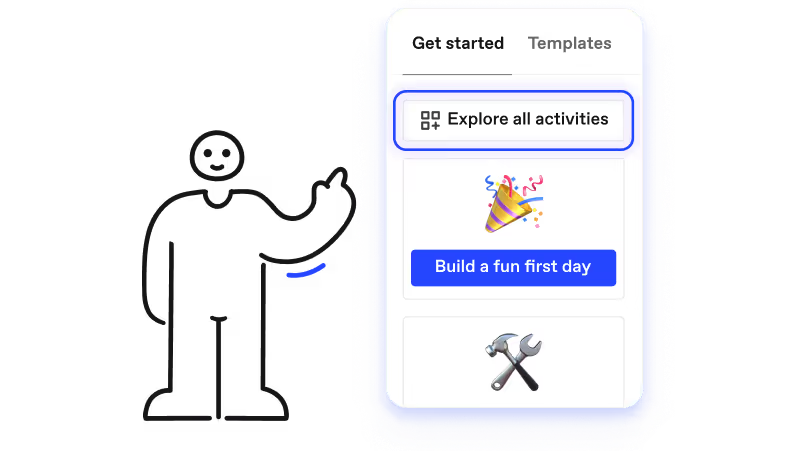
{emphasize}See how Workleap Onboarding creates a more flexible, custom experience for every new hire with task checklists and personalized onboarding plans.{emphasize}
Feedback and recognition
Gen Z appreciates receiving regular feedback and recognition. They want to know how they're performing, what they’re doing well, and where they could focus on improving. Sharing feedback is easy through Workleap Onboarding, and you can keep it in context alongside the employee’s tasks, goals, and accomplishments. What better way to encourage your new employees and show them that they’re doing a great job?
Just as important as providing feedback to new hires is receiving it from them. You can easily collect employee feedback with Workleap Onboarding’s automated surveys, providing a straightforward way for new joiners to share feedback on things like:
- What worked well
- What needed to be clarified
- What needed to be more helpful
This helps you improve the onboarding process for your next new hire, and can spark meaningful conversations with your new team member.
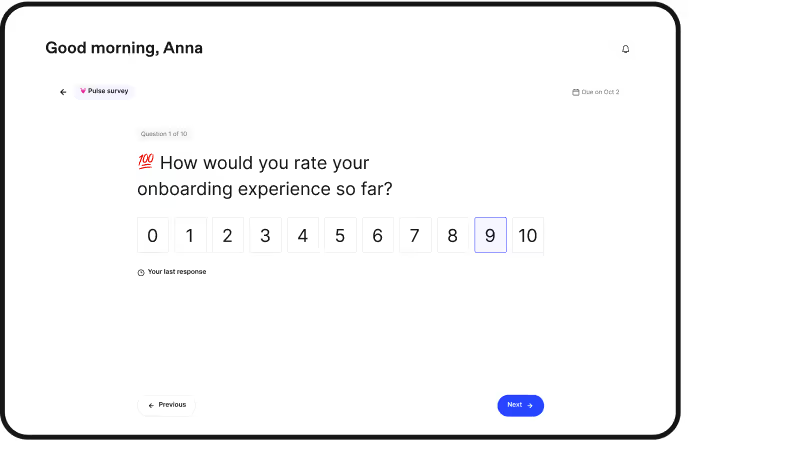
Mentorship opportunities
Access to experienced colleagues and the opportunity to learn from mentors in their area of expertise is very valued by Gen Z. They’re keen to learn and develop their skills, and connecting with someone who has been there and who gets it makes a big difference for them. This helps them grow and shows them they have a real future at your company—and that you can see that potential in them, too.
Beyond their personal growth and mapping out a career trajectory, connecting new hires with upper leadership helps break down hierarchy and red tape. It shows people that everyone is valued at your business, no matter their role or seniority level. This doubles down on creating a sense of belonging and encourages new hires and more junior staff to speak up and share their ideas and opinions.
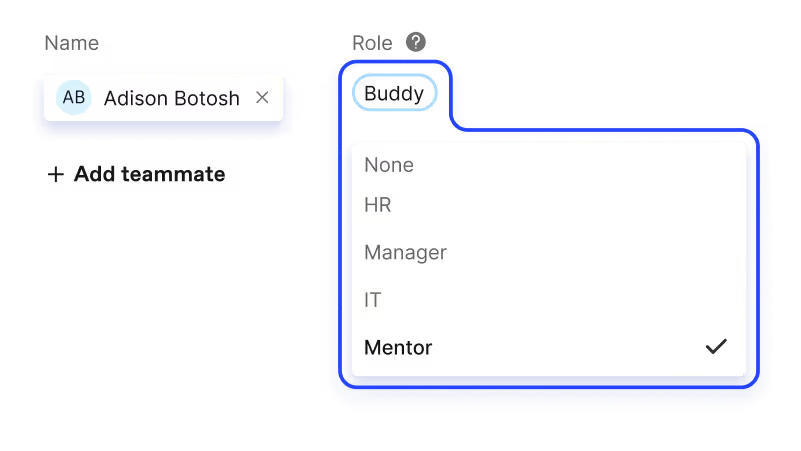
Speaking Gen Z's language
Video is a cornerstone of how Gen Z likes to communicate and learn. It’s their preferred form of media:
Gen Z is accustomed to watching videos to learn how to do things and recording videos to share their thoughts and opinions. So incorporating video welcomes into your onboarding flow creates an experience that’s familiar and authentic to their preferences. Welcome videos are a key feature of Workleap Onboarding, helping you create personalized and engaging onboarding experiences for all your new team members.

Helping Gen Z take your business to new heights
It doesn’t seem like that long ago that millennials were the new kids in the office. Yet a large portion of Gen Z are now experienced employees, with 5-10 years of work under their belt. Gen Z’s influence in the workforce has landed. And starting off your relationships on the right note with an engaging, technology-enhanced onboarding experience is key.
Discover how Workleap Onboarding can elevate your onboarding process to meet Gen Z's unique needs – sign up for a personalized demo today.
%20(1).png)

%20(1).avif)


.avif)
.avif)




